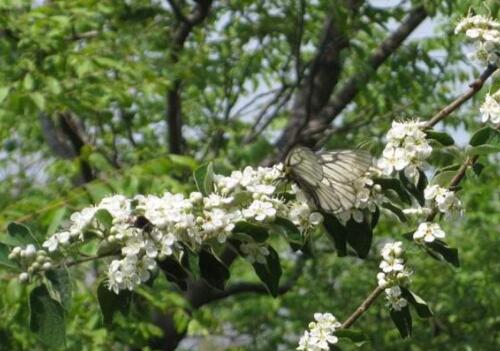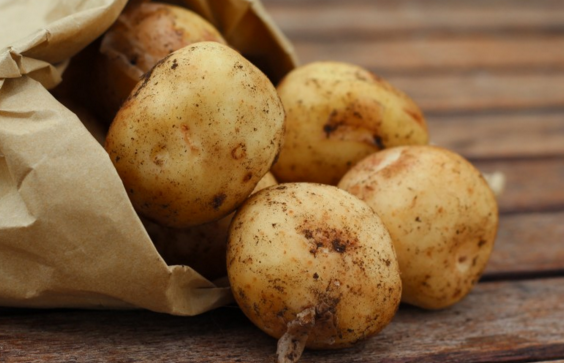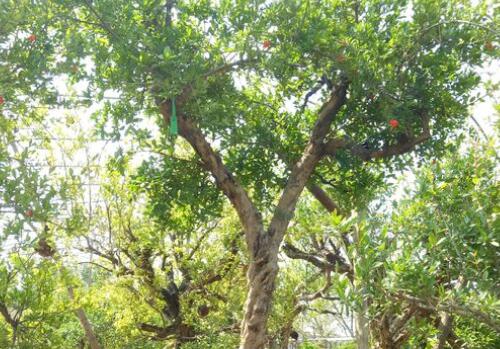How much does a white flower tree cost? When do they bloom? What are the planting techniques?
White flower tree, also known as white leaf benzoin, Vietnam benzoin, Arbor, 5ml 12 meters high; distributed in Guizhou, Guangxi, Guangdong, Hunan. There are also some in northern Vietnam. So how much is the price of a white flower tree? When will it blossom? What are the planting techniques? According to Jiangsu Seedling Base, the price of height in 35~50CM is 1.8-3.5 yuan per tree, that of 60~80CM is 3-6 yuan, and that of 100CM is 10-17 yuan per tree.

When does the white tree blossom?
White flower trees generally bloom in spring and can be used as shade trees or street trees. Flowers are edible. The trees are graceful, the flowers droop and bloom like snow when they are in full bloom. The garden is used in waterfront, lakeside or shady valley, on both sides of the stream, planted on the edge of evergreen trees, white flowers reflected in the green leaves, interesting. Flowers, leaves and fruits can be used medicinally.
What are the planting techniques of White Flower Tree?
To sow and reproduce:
1. Strong seedling cultivation technique ⑴ seedling raising method: sexual propagation and asexual propagation can be used to raise seedlings, and asexual propagation mainly uses grafting to raise seedlings. ⑵ seed collection and storage: healthy and vigorous mother trees were selected from late October to early November to collect full seeds, wash and dry the wax after harvest, and store them in a cool place in a plastic bag.
⑶ sowing and Seedling raising: ① Sand bed Seedling cultivation: the bed is built with bricks. The bed is 20ml 30cm high and 25cm lower on the sunny side. The bed width is 1.0Mel 1.2m, and the length depends on the specific situation. The fine sand on the bed is about 10 cm thick, and the sand bed is disinfected with 1% copper sulfate (Bordeaux solution) and ready for use. Sow seeds from February to March and sow evenly. After sowing, gently press the seed with a plank to make it smooth with sand, and spread a layer of fine sand so that you can't see the seed. Then cover the arch with plastic film. When the seed germinates up to 30-50%, the film can be lifted. ② nursery selection: White trees like light, young trees have poor cold tolerance, it is appropriate to choose good drainage and irrigation, shelter from the wind to the sun, loose, deep and fertile soil as nursery. ③ soil preparation and bed construction: three ploughs and three harrows prepare the land, disinfect the soil with 230kg of quicklime or 10kg of ferrous sulfate powder per mu, apply rotten barnyard manure 3000m / 4000kg, or 100ml 140kg of cake fertilizer and 23ml / 30kg of calcium magnesium phosphate fertilizer, rake evenly and build a bed. The height of the bed is 15ml 20cm and the width of the bed is 1.0mi 1.2 m. The bed is covered with fine red soil about 2 centimeters thick. ④ bud seedling transplanting: the sand bed bud seedling can be transplanted after 3 leaves, and the main root of the bud seedling can be cut off and planted according to the row spacing of 6 Mel 8 × 25 mi 30 cm. Water thoroughly in time after planting, and attention should be paid to keeping the suitable humidity of the seedbed in the future.
⑷ grafting seedlings: ① rootstock cultivation: methods of co-sowing seedlings. It can sow seeds directly in the field, and the sowing rate is controlled at about 200 grains per square meter. One-year-old seedlings of Jianwang were used as rootstocks. ② scion selection and harvest: select vigorous and fruiting plants as mother trees, and pick healthy branches next to fruit branches as scions, pick ears 3 weeks before grafting, wrap them in film bags and store them in a cool place for use after harvest, pay attention to keep the branches moist and do not lose water. ③ grafting: mainly by cutting or ventral grafting. Can be carried out indoors, can also be directly grafted in the field, spring and summer can be grafted. But the survival rate of grafting in summer is higher. ④ grafting and transplanting: transplant according to the row spacing of 15 × 30 cm, pay attention to the extension of the rootstock, pick tightly and firmly, fill the soil to the grafting interface, ear buds exposed on the soil layer, pour through the fixed root water.
⑸ seedling stage management: ① timely shading: after budding and transplanting, attention should be paid to moderate shading in the early stage. Grafted seedlings should also wipe buds in time to remove sprouting and prevent new shoots from breaking. ② strengthens weeding and tending: weeding in time according to the principle of "getting rid of early, small and complete", and loosening the soil 3 times according to "front shallow and deep", in order to promote seedling growth. At the same time, disinfect and kill insects with low concentration fungicides and insecticides regularly to prevent the occurrence of diseases and insect pests. ③ appropriate amount of fertilization: in order to promote seedling growth, combined with weeding and loosening soil, 1-Mel topdressing should be applied twice, and the amount of fertilizer should be determined according to the growth of seedlings. ④ grading nursery: the height of the seedlings can generally reach more than 0.8m, the ground diameter is more than 1cm, and can be graded out of the nursery for afforestation. The yield of bud grafted seedlings can reach more than 20, 000 per mu, and the number of grafted seedlings can reach more than 14000.
Dig holes in the ground:
Total reclamation, belt reclamation, block reclamation and hole reclamation can be used for land preparation. The depth of soil preparation is 30ml / 40cm. The hole was dug according to the specification of 60 × 50 × 50 cm, and the basic fertilizer such as rotten stable fertilizer or withered cake fertilizer was applied and mixed well with the topsoil.
⑶ planting density and afforestation season: the initial planting density is 40 trees per mu, that is, the plant row spacing is 4 × 4 meters or 3 × 4 meters. The seedlings can be afforested from the dormancy of deciduous leaves to before bud germination, that is, from late November to early March.
⑷ seedling planting: choose cloudy or light rainy days for afforestation. Seedlings can be raised without lodging soil, but attention should be paid to avoid dehydration and dryness of seedlings. When planting, master the seedling root Shu, pick tightly and firmly and pour through the fixed root water. Straw cover is also used to prevent cold in cold winter or low temperature areas.
3. Techniques of stand tending management and high yield management: ⑴ fine tending: weeding, fertilization and tending of young forest every year. After hanging fruit in the adult forest, we should appropriately expand the hole and loosen the soil and apply fertilizer, and the amount of fertilizer application depends on the stand growth or fruit amount.
⑵ pruning and shaping: in order to increase the seed set and facilitate picking, the main branches were cut off 1.5 meters above the ground 3-4 years after planting, and 5 active sprouting branches were retained. After that, the overgrown shoots were pruned in time to promote the formation of low and wide crowns.
⑶ moderate interplanting: economic plants such as crops, tea, traditional Chinese medicine, low shade-tolerant flowers and trees can be interplanted in the stand, so as to improve the efficiency of woodland management.
⑷ pest control: the main diseases and insect pests are black bean disease, powdery mildew, leaf borer and camphor silkworm, etc. when they occur, they are sprayed with Bordeaux solution, Dysen zinc, trichlorfon or DEP.
Time: 2019-03-18 Click:
- Prev

When is the best time to sow potatoes in Solanaceae? What is the planting method?
Potato (potato), a perennial herb of Solanaceae, is the fourth most important food crop in the world, after wheat, rice and corn, so when is the best time to sow potatoes? What is the planting method? When is the best planting time for Solanaceae potatoes?
- Next

What is the reason why the planted pomegranate trees fall from flowers and fruits? How to improve the fruit setting rate and prevent rotten fruit? What kind of medicine should I take?
Pomegranate tree generally refers to pomegranate, also known as pomegranate, Shanli leaf, Dan Ruo, Ruo pomegranate wood, Jinlu, Jinpang, Tulin, Tianjia, which are cultivated in the north and south of China. So what is the reason why pomegranate trees fall from flowers and fruits? How to improve the fruit setting rate and prevent rotten fruit? What kind of medicine should I take? What is the reason why pomegranate trees fall from flowers and fruits?
Related
- Fuxing push coffee new agricultural production and marketing class: lack of small-scale processing plants
- Jujube rice field leisure farm deep ploughing Yilan for five years to create a space for organic food and play
- Nongyu Farm-A trial of organic papaya for brave women with advanced technology
- Four points for attention in the prevention and control of diseases and insect pests of edible fungi
- How to add nutrient solution to Edible Fungi
- Is there any good way to control edible fungus mites?
- Open Inoculation Technology of Edible Fungi
- Is there any clever way to use fertilizer for edible fungus in winter?
- What agents are used to kill the pathogens of edible fungi in the mushroom shed?
- Rapid drying of Edible Fungi

